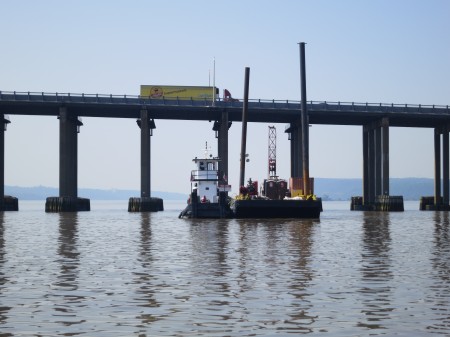It can’t be business as usual on our waterfront any more

View more images on our Flickr site
By BERYL THURMAN
North Shore Waterfront Conservancy, executive director/president
DEBBIE MANS
NY/NJ Baykeeper, executive director
PAUL GALLAY
Riverkeeper, president and Hudson Riverkeeper
New York City will engage in many conversations about climate change resilience and adaptation in the years to come. But on Staten Island, that conversation is frozen in its tracks and it is business as usual.
Despite the clear wake-up call from Superstorm Sandy, permits for development continue to be granted along the North Shore of Staten Island.
Did Sandy teach us nothing? Building in flood plains puts homes and businesses at risk, yet there has not been a pause to allow time to assess the impact these developments will have on existing communities.
Government agencies are issuing permits that businesses and developers applied for before Sandy hit and are once again going through the processes and granting approvals as if nothing unusual has happened.
Housing developments in flood plains continue. One prominent example is the former home port, a location now owned by the Iron State Development Company of New Jersey, which is only several hundred yards from where the tanker John B. Caddell was pushed onto Front Street during Sandy.
This proposed housing development is just a few blocks from Rosebank’s Waterview Court. In 2007 a nor’easter hit this community’s retaining wall, which caused the homes to shift towards the Narrows and forced the evacuation of 32 residents from their homes. All these years later, those residents are still unable to occupy their houses. Yet they are still required to pay the mortgages on these nearly half-million-dollar homes.
St. George’s low-lying area is the proposed location for the New York Ferris Wheel, part of a commercial and residential complex that will include retail stores and a hotel. The developers of the site issued the Environmental Impact Statement on the proposed development for public comment within weeks of Hurricane Sandy hitting New York and devastating Staten Island’s South and East shores.
Natalyn Corporation LLC’s development on Nicholas Avenue in Port Richmond is a proposed 90-unit housing complex that will be built on a fresh-water wetland. This development is approximately 75 feet from three manufacturing sites directly across the street. These manufacturing properties are open uses with significant soil contamination problems that have yet to be properly addressed.
One of these properties is the 1939-1942 Archer Daniels Midland Company/Manhattan Project Raw Uranium Ore Storage Site also known by the U.S. Environmental Protection Agency as the Richmond Terrace Radiological Superfund site.
The other two sites Perfetto Construction and Edkins were plunged under water during the storm surge.
The Bayonne Bridge raising by the New York/New Jersey Port Authority will negatively impact the environmental justice communities of Port Richmond, Elm Park and Mariners Harbor.
This large-scale construction project will raise the bridge roadway 64 feet in order to accommodate bigger container ships. The huge scope of this project made it subject to and produced an equally large 7,000-page environmental assessment according to the Natural Resources Defense Council.
Despite this voluminous assessment, residents were only given approximately 60 days to review this document and respond.
Staten Island Terminal LLC, a subdivision of Cementos Lima Peru, was redirected to Staten Island after the company’s attempts to set up its location in Sunset Park, Brooklyn, were thwarted. They promise to bring 50 or 60 more trucks through the community and will be one of two cement companies within walking distance of one another.
Each day, residents wake to apprehension of what near-disaster will greet them. With so much going on all at once, is there any wonder that Staten Island is overwhelmed and frozen in its tracks?
The public must be given a reasonable comment period to weigh in on proposed development as well as enough time to respond to the required environmental impact statement (EIS). A rushed comment period like the one that occurred with the New York Wheel project, when people were still reeling from the effects of Sandy, should not be the case going forward.
Superstorm Sandy sent an unmistakably clear message to us all that we are living in a new era. Climate change and sea-level rise are not a future possibility; it is happening. The fact that Staten Island is an island, which we tend to forget, means that citizens, businesses and our officials must adjust to this new reality.
Any future development in low-lying and flood-zone areas must be carefully considered and dictated by science and the facts about what the environment can withstand.
It is up to city officials and the New York City Economic Development Corp. to operate within this new framework to ensure the safety of citizens and the economy of Staten Island.
